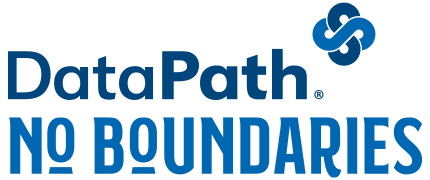
Computer technology is continually evolving. The benefits administration platforms of years past are ill-equipped to meet the demands of 21st century users, and benefits administrators are looking for increased efficiency, better data integrity, and greater value from software vendors.
As vendors merge and go through multiple acquisitions, they try to meet consumer expectations by integrating separate systems, but often fall short. A comprehensive approach to developing a single benefits platform for CDH account and COBRA administration may provide the ultimate solution.
Introduction
Benefits administration platforms have come a long way from the days of floppy disks and client/ server applications. Cloud-computing is streamlining the way third party administrators (TPAs) perform their jobs; however, utilizing separate benefits administration platforms for various administrative functions (such as account administration, COBRA billing, invoicing, etc.) can be inefficient and frustrating. While software vendors are trying to bridge the gap through acquisitions and mergers, TPAs are still looking for ways to become more efficient, receive better customer service and technical support, and get more bang for their overall buck.
History of Benefits Administration Platforms
In the early 1980s, as desktop computers gradually became a staple in the workplace, users purchased software on a disk (or series of disks) and installed the program on their computer. Each software bundle was created to deliver a specific program, and every piece of data saved locally to the computer hard drive or to a disk.
As technology progressed in the latter 80s and through the 90s, computers could link to a network and interact with each other. Data was now stored on a local server instead of on the computer hard drive. While software was still physically distributed on disks or CDs, multiple programs were still involved and the programs were often modified to communicate and work together.
The rapid development of computer infrastructure in the mid-2000s saw the rise of cloud-computing, where a remote web server hosts the software and data storage, and users access the application through a secure internet connection. Over the past decade, cloud-based computer programming has become the standard bearer as ease, convenience, and security have improved and more people are comfortable with utilizing web-based applications. However, many applications are still designed for a single purpose, requiring each application to interact with one another to share data. This is especially noticeable when businesses merge or get acquired because the master company has to integrate the subordinate systems in order to try and make them all work together.
For benefits administrators, transitioning to a different platform triggers many questions and concerns. Do they use separate vendors for each application or choose a single vendor with multiple integrated systems – or is there a better option?

Challenges Faced by TPAs When Using Multiple Systems
TPAs face a variety of challenges when using separate benefits administration platforms or a cloud-based system that is billed as ‘integrated’. Generally speaking, an integrated system is two or more separate systems (created by different developers) that work together to share information; system integrations are often the result of business acquisitions and mergers. This ‘frankensystem’ presents an array of serious concerns:

Inefficient workflows – Each system was built and designed by distinct vendors for their specific purposes and views on how the product should work. Post-acquisition and integration, however, they’re marketed as one solution. Unfortunately, since the ‘solution’ is comprised of multiple independent systems, the user must learn to use different workflows and design schemes which significantly increases the complexity and time spent onboarding new employee groups and participants. For the Master vendor, it also carries a host of issues in areas like customer support, data integration, and others.

Duplicated records management – Since each system has its own processes and workflows, records management is not simple in an integrated solution. For each participant in the system, administrators may use one record to process CDH accounts and then a separate record for COBRA. Ensuring that all records are up to date for a single participant can be a monumental task.

Degraded customer service – When a TPA encounters an issue with multi-vendor benefits administration platforms, they can experience a multitude of frustrations. After submitting a trouble ticket or calling customer support to resolve a problem, they often run into a series of finger-pointing or call transfers because the support teams have difficulty identifying the trouble source. Even when there is a single point of contact and a good working relationship between both teams, when one side cannot fix the issue, they often have to consult the other team, further delaying the resolution. Meanwhile, the TPA is left hanging and cannot get back to performing their daily business duties in a timely manner.

Higher retail costs – Businesses want the most bang for their buck. However, when a TPA purchases an ‘integrated’ system, they frequently pay a higher rate because the software provider has larger overhead costs and is paying for redundant capabilities, such as duplicated reporting and separate technical support teams. With multiple systems, software vendors often pay for additional specialized training, manage duplicate user configurations, and maintain more equipment. All of these costs are bundled into the contract and passed on to the TPA.

Real-time falsehood – True real-time data does not usually exist when separate systems are simply integrated. The systems must communicate with each other and synchronize in order to keep data in each system up to date. Data transfers slow down productivity and can be unreliable, thereby impeding the TPA’s best efforts to be efficient and productive.

Eroded data integrity – Because data is housed on multiple benefits administration platforms, synchronization is key to the success of the TPA, who needs current, accurate data at all times. When one system goes down, the other cannot update as necessary, creating many data integrity problems. Plan enrollment and invoicing becomes cumbersome, and flawed data can lead to a disruption in benefits and erroneous billing. When this occurs, the TPA receives calls from angry clients who were denied service or overcharged because the system information was inaccurate.
The Solution: A Holistic Benefits Administration Platform
TPAs who handle employer benefits administration and perform COBRA billing need more than what multiple benefits administration platforms marketed as a single solution can offer. The answer is a single, cohesive platform designed specifically to perform both CDH account administration and billing within the same system. Here are some important advantages that this seamless technology solution can offer:

Increased efficiency – Participant enrollment is done through a single web portal, eliminating the duplication of data entry and the need for data synchronization. In addition, when an administrator enters a change in employment status, this automatically triggers consecutive actions, e.g. benefit coverage termination and COBRA enrollment. Plus, in the office, a single team can manage the entire system, rather than having a specialized team for each individual function.

Simplified records management – A single record (whether it’s for an employer or a participant) that maintains all benefits data allows administrators single source records management.

True real-time data – Since the data is stored within a single platform, there is no need to synchronize the information in multiple applications.

Enhanced data reliability – The data is always current because it is all pulled from the same platform, no matter which administrative function is being used.

Single-source reporting – When reporting time comes, TPAs can specify which data they want and how they want it. The holistic system then produces one single report that is usable immediately, without the extraneous data overlap and multiple reports that come from multiple integrated systems that may then have to be merged through a third-party tool.

Consolidated invoicing – With a comprehensive platform, TPAs can enjoy streamlined invoicing by submitting a single bill for all services performed instead of one bill per each individual service.

Better value – A single vendor platform does not have to account for extra overhead costs which are then bundled into the contract. With fewer overhead and other costs for the vendor, there are fewer hidden costs passed along to the purchaser.

Conclusion

For decades, TPAs have relied on separate software packages to operate their businesses. In one system, they administer employer benefits and in another, they perform billing functions. Ensuring data was correct and up-to-date in these systems often required double the data entry work and many valuable hours verifying each record. In addition, invoicing was a major hassle because TPAs could only produce one invoice for one service, further adding to the cost of time, labor, and office administration.
As systems became more sophisticated and complex, TPAs began to experience an uptick in productivity, but many still found some functions lacking. This was especially noticeable as software firms merged and created ‘integrated’ systems, because it was difficult to deliver on the promise of increased efficiency, improved customer service and better data integrity. Serious complications arose when one piece of the integrated system went down, experienced a problem, or lagged from data synchronization. Additionally, customer and technical support teams merged, but the merger did not make them more efficient as pinpointing and resolving problems became more troublesome than ever.
For TPAs who want more, there is a better option: a natively-built platform that was created as an all-encompassing solution with seamless technology. TPAs increase their efficiency through single-system login, with single platform enrollment, and simplified management of participants. Moreover, the seamless technology platform enhances automation because a simple change in one aspect of the system can trigger subsequent events, such as COBRA enrollment, helping the administrator become more efficient. Reporting and invoicing are simplified, saving time and money. Real-time data is exactly as it sounds; the single, cohesive system stores all the information in one single platform that is accessed by every application and function, which also solidifies data reliability. Plus, if the TPA needs customer service, the software company’s technical support team knows the entire system, rather than specializing in one function or another, which can hasten and improve ticket resolution time.
Therefore, when it comes to benefits administration platforms, the old adage − “less is more” − rings true. A single system, built from the ground up with seamless technology, is far more efficient and reliable than two or more integrated applications.
About the Company: For 40 years, DataPath has been a pivotal force in the employee benefits, financial services, and insurance industries. The company’s flagship DataPath Summit platform offers an integrated solution for managing CDH, HSA, Well-Being, COBRA, and Billing. Through its partnership with Accelergent Growth Solutions, DataPath also offers expert BPO services, automation, outsourced customer service, and award-winning marketing services.

